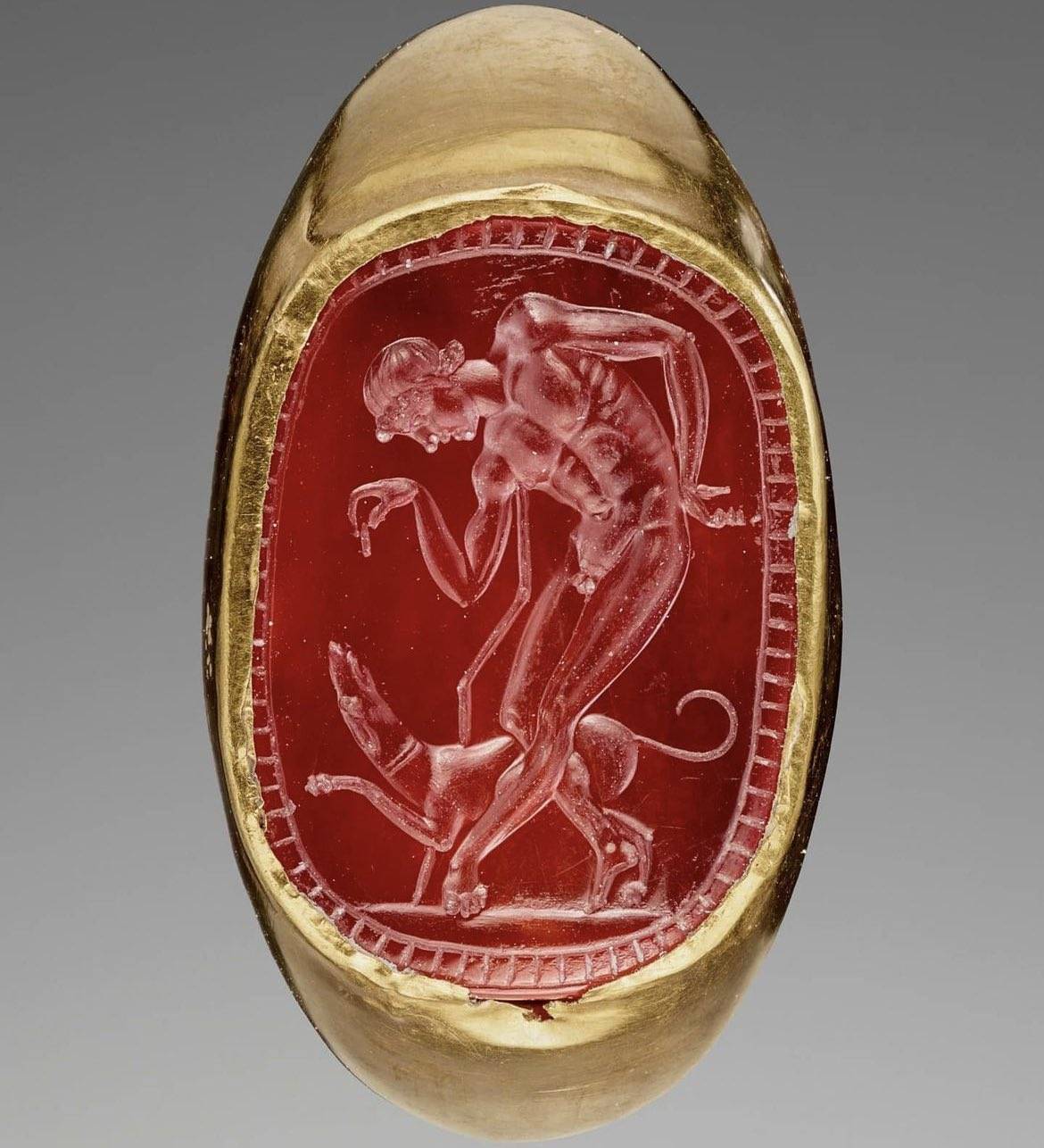A Roman gold ring with an engraved Carnelian gem which depicts a young man giving his dog a tasty snack, c. 3rd to 2nd century.
Many Romans loved their dogs and would not only have them depicted in their jewelry but also make graves for them with personal epitaphs. Here are just a few of them:
1. "I am in tears while carrying you to your last resting place as much as I rejoiced when bringing you home in my own hands fifteen years ago."
2. "Thou who passest on this path, If haply thou dost mark this monument, Laugh not, I pray thee, though it is a dog's grave. Tears fell for me, and the dust was heaped above me By a master's hand."
3. "To Helena, foster child, soul without comparison and deserving of praise."
4. "This is the tomb of the dog, Stephanos, who perished, Whom Rhodope shed tears for and buried like a human. I am the dog Stephanos, and Rhodope set up a tomb for me."
5. "[Myia] never barked without reason, but now he is silent."
6. "Here the stone says it holds the white dog from Melita, the most faithful guardian of Eumelus; Bull they called him while he was yet alive; but now his voice is prisoned in the silent pathways of night."
7. "Issa's more pert than Lesbia's sparrow love, Purer than kisses of a turtle-dove, More sweet than a hundred maidens rolled in one, Rarer than wealthy India's precious stone. She is the pet of Publius, Issa dear; She Whines, a human voice you seem to hear."
8. "Surely even as thou liest dead in this tomb I deem the wild beasts yet fear thy white bones, huntress Lycas; and thy valor great Pelion knows, and splendid Ossa and the lonely peaks of Cithaeron."
9. "You who pass on this path, if you happen to see this monument, laugh not, I pray, though it is a dog's grave. Tears fell for me, and the dust was heaped above me by a master's hand."
Similarly;
This 2,000-year-old sapphire ring is a dazzling piece of jewelry thought to have belonged to Caligula, the notoriously tyrannical ancient Roman emperor.
Caligula ruled from 37 CE, but his reign was cut short after four years when he was assassinated by Praetorian Guards—the security force that was meant to protect the emperor.
Sapphires are exceptionally hard, and it would have taken quite a bit of skill to not only cut and polish the sapphire but also to carve the delicate portrait on the front of the ring. The design appears to be a portrait of Caesonia, Caligula's fourth and last wife.
Read also;
Ancient Egyptian rock crystal ring carved in the shape of a sphinx dates back to 1295-1069 BC. The age and origins of the Great Sphinx of Giza remain a subject of debate among experts.
While many Egyptologists believe it was constructed during the Old Kingdom (c. 2686-2181 BC), there are no inscriptions from that era mentioning the Sphinx.
Geologist Robert Schoch proposed that water erosion on the Sphinx suggests it could be much older, possibly around 10,000 BC, dating back to the end of the last Ice Age. Schoch also questioned the head of the Sphinx, suggesting it might not be the original head and could have been placed there later.
Egyptologist Zahi Hawass countered Schoch's hypothesis, stating that no artifacts or inscriptions predate Egyptian civilization by more than 5,000 years.
Regarding erosion, some geologists suggest it could result from Nile river flooding, while others point to Haloclasty, a process involving moisture and salt crystals within limestone that can cause erosion when heated.



